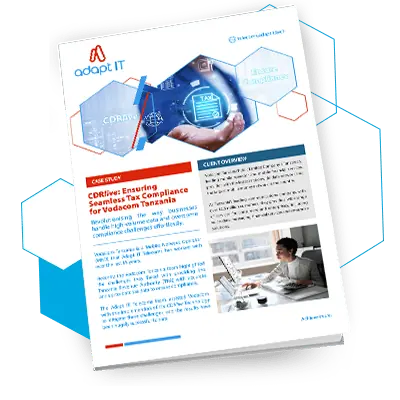The development and adoption of digital technology is changing the way in which businesses are operating and reviewing performance. Data analytics, or the use and understanding of big data, has become essential to improving business performance, customer service, customer experience and reducing customer churn, especially in the case of Telcos. But with more data comes increased complexity as well as an increase in the number of variables to analyse and the types of analysis required. This has led to several key data analytics trends and analytic technology trends coming to the forefront.
Table of Contents
ToggleHow is data analytics impacting the Telecommunications industry?
The move towards digital has had a significant impact on the number of mobile phone users. GSMA predicted that the number of unique mobile subscribers increased from 4.66 billion in 2015 to 5.59 billion in 2019. It was also predicted that 72% of the global population would be subscribed to a mobile service by 2020. This has created a unique opportunity for Telcos to build and grow their business, but with this growth comes increased competition in the market.
Many Telcos have turned to machine learning (ML), artificial intelligence (AI), advanced analytics and business intelligence tools, cloud deployment and the internet of things (IoT) to give them a competitive edge in the market. It is estimated that the telecommunications industry is expected to invest $36.7 billion annually in AI-related software, hardware, and services by 2025.
These analytical tools and capabilities allow Telcos to process and analyse data related to customer experience, network automation, business process automation, new digital services and infrastructure maintenance. By understanding the data associated with each of these, Telcos can improve customer experience, customise services, offer services that speak to customers needs, identify problems or opportunities for improvement, reduce churn and enhance revenue.
5 Key Data Analytics Trends
As mentioned above, the use of data analytics is having a significant impact on businesses as a whole, from processes related to workflow, infrastructure and more. More and more businesses are moving towards a data-driven culture and this is primarily due to the critical role that data plays in making informed business decisions. Data analysis is being used in every aspect of a business to enhance efficiency and to optimise processes and operations.
The increased reliance on and utilisation of data has led to several key data analytics trends being identified by Gartner. We examine five of these data analytics trends and their expected impact on business, below.
1. Augmented Analytics
The trend of augmented analytics talks to how analytics and the access to relevant, important and trusted data can be used to optimise and enhance business practices, systems and operations. Analytics, through the implementation of AI and machine learning, is being used to automate essential analytical tasks, faster and more efficiently. The knock-on effect is that more individuals within the business can pick up insights without having the technical skills of data managers. Commercial AI and ML is making it possible for more employees to understand and interpret large amounts of essential business data and utilise this to enhance operations.
This ultimately bridges the skills gap and improves productivity within the business. For example, use cases include: fraud detection, product development simulations, marketing campaigns, customer life time management and retention.
2. Augmented Data Management
Data management is changing. Data managers are extending their roles to include the leveraging of information to make strategic, operational and tactical decisions in order to increase revenue, customer experience and enhance operational efficiency. But data quality also plays a significant role in this. If the quality of data needed to make these decisions is not stored, managed, sourced or accessed correctly then the information and insights derived from the data may be compromised. Many data managers are turning to robust data management tools, applications and AI systems to ensure data quality is maintained, governed by the correct policies and is available in real-time. This facilitates efficient and informed decision making in the business.
3. Continuous Intelligence
Continuous Intelligence talks to the need for real-time analytics to be incorporated into Telcos business operations and systems. This data system can compute and process large volumes of data, both current and historical, to provide insights that aim to enhance and optimise decision making.
The use of Continuous Intelligence systems can, through the use of specific algorithms, do this at a pace that is much faster than any human would be able to in the same amount of time. Continuous Intelligence aims to ensure that you have all the data and insights needed to make the right and best decisions possible for your business.
4. Data Fabric
A data fabric approach allows you to seamlessly access data from multiple data sources, infrastructure types and locations. This data ecosystem utilises heterogeneous data storage to facilitate seamless data access and integration, which allows for enhanced data agility as well as faster analytic and reporting turn around. Over the next two years, this trend is expected to be adapted and redesigned to create more dynamic approaches. This is already being seen through the implementation of data mesh networks.
5. Data is driving CX
Customer experience can mean the difference between success and failure. With consumer service and experience being such a critical differentiator in the market, many businesses are turning to data to gain insights and information into what customers and end-users want and need. This trend utilises data to deliver targeted customer experiences which will ultimately have an impact on customer loyalty and reduce customer churn. If you are providing customers with an experience that is tailored to their needs, then why would they turn to any other provider? The answer to this personalisation lies in data, information and insights.
Conclusion
From the data analytics trends identified above, it is clear that the need to generate, manage, interpret and understand data will continue to be at the centre of business growth and success. In the case of Telcos, the above analytic innovations and data science will continue to play a significant role in providing insight that will allow for the adaption of operations, business models and technological solutions. This insight will offer ways to improve customer experience, enhance the customisation of services and offerings that talk to customer’s needs, the identification problems or opportunities for improvement, the reduction in churn and an increase in revenue and business success.
Explore the Power of CDR

Head of Insight Solutions at Adapt IT. Transforming data that can improve business processes, operations and offerings.








